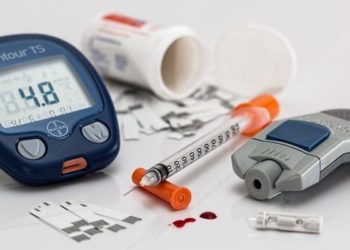Association between county level cannabis dispensary counts and opioid related mortality rates in the United States
1. Increasing medical and recreational dispensary counts were associated with reduced opioid-related mortality rates per county in the United States.
Evidence Rating Level: 2 (Good)
With opioid-related mortality rising sharply since 1999 and accounting for over two thirds of all US drug overdose deaths in 2018, research into how changes in the overall supply of other drug markets may affect this public health crisis. Some studies have found a negative association between opioid-related mortality rates and the legalization of medical and/or recreational cannabis, while other studies have found this association non-significant. This study examines whether legally authorizing storefront dispensaries to sell cannabis, medical and/or recreational, would impact opioid mortality rates per county. Using panel regression methods, US mortality data from Centres for Disease Control and Prevention, US census data, and data from Weedmaps.com on storefront dispensary operations were analyzed by county from 2014-2018, a period of considerable change in cannabis legalization in the country. Models included controls for whether a state allowed for recreational sales and what kinds of opioid interventions (ie naloxone access) were available. As opioid-related mortality rates have recently been largely driven by deaths from synthetic opioids like fentanyl, opioid-related deaths were also categorized by prescription opioids, heroin, and synthetic opioids other than methadone. While eight states and the District of Columbia have authorized selling recreational cannabis, fifteen states legalized selling only medical forms. Dispensary count by county (natural log) was negatively associated with the log-transformed, age-adjusted mortality rate from all opioid types (β=-0.17, 95% CI: -0.23 to -0.11). This association remained significant with numbers of medical and recreational dispensaries separately: an increase from one to two medical and recreational dispensaries corresponded to an estimated 15% and an estimated 11% reduction in deaths respectively. Overall, an increase from one to two dispensaries per county correlated with an estimated 17% reduction in opioid-related mortality rate. Increases in dispensary count were also significantly and negatively associated with synthetic, non-methadone opioids, with an increase from one to two medical dispensaries reducing mortality rates by 14% (β=−0.14, 95% CI: −0.21 to −0.07) and a similar increase in recreational dispensaries resulting in a 21% reduction (β=−0.21, 95% CI: −0.29 to −0.13). However, only medical dispensary count, not recreational, was negatively associated with heroin-related and prescription-related mortality rates. While no causal relationship can be established from this observed negative association between cannabis dispensary counts and opioid-related mortality rates, these findings support further investigation into how the accessibility and structure of other drug markets may impact opioid use and misuse.
Click to read the study in BMJ
Image: PD
©2020 2 Minute Medicine, Inc. All rights reserved. No works may be reproduced without expressed written consent from 2 Minute Medicine, Inc. Inquire about licensing here. No article should be construed as medical advice and is not intended as such by the authors or by 2 Minute Medicine, Inc.






